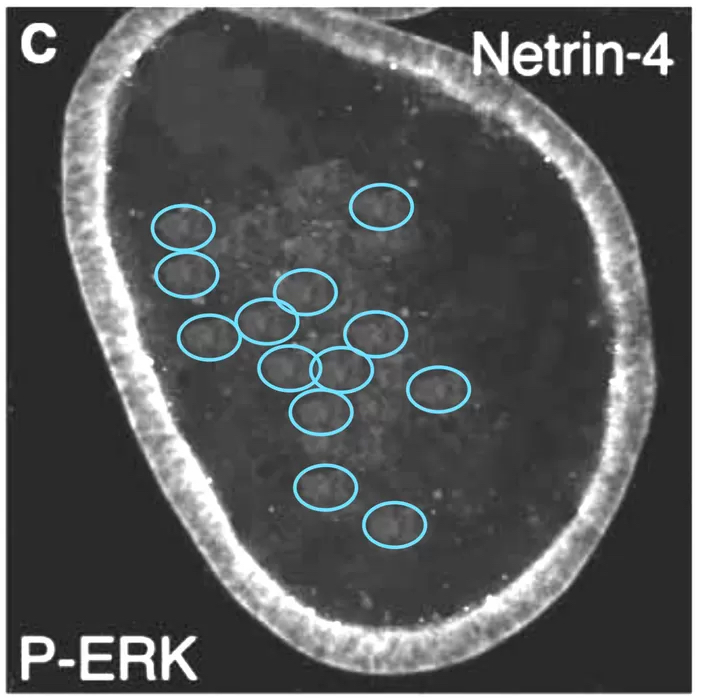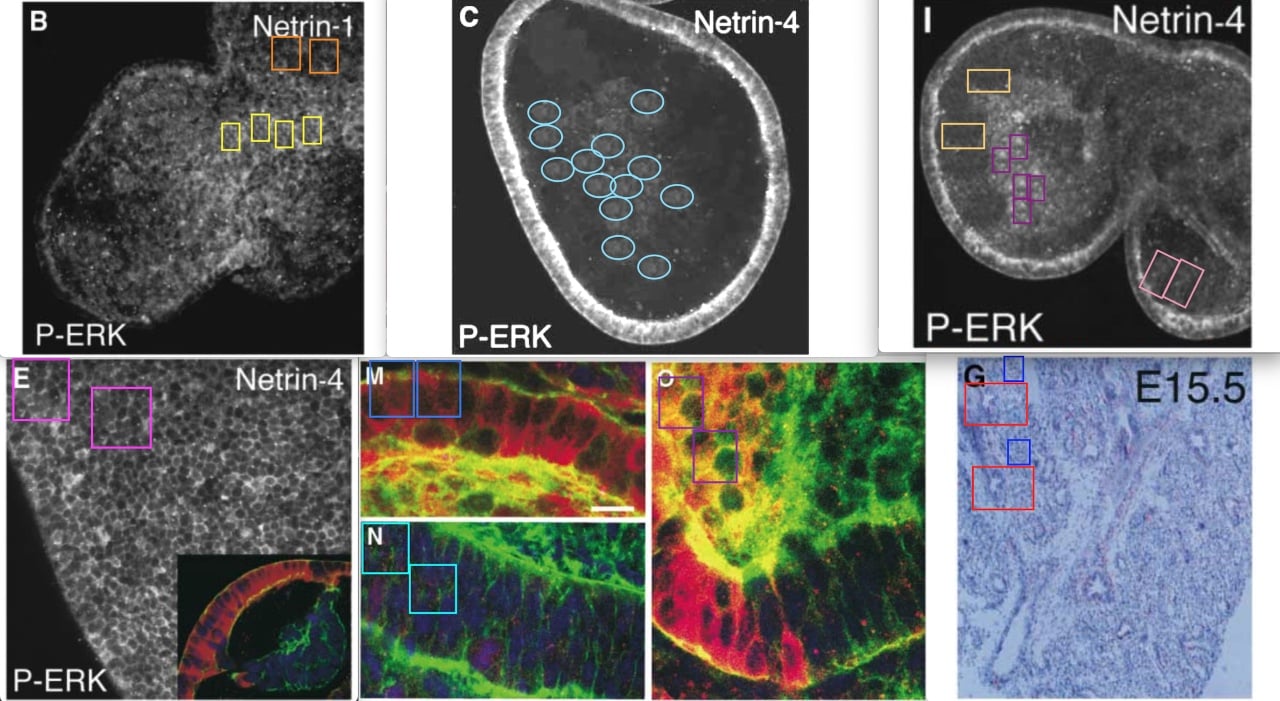Two more papers on which President Marc Tessier-Lavigne is a co-author have been alleged to contain image alteration, bringing the total up to seven. Hours after the new allegations were brought forward, Jerry Yang ’90 M.S. ’90, chairman of Stanford’s Board of Trustees, announced the structure of the University’s investigation into Tessier-Lavigne’s research. The investigation will be led by former U.S. Attorney for the Southern District of California and current board member Carol Lam JD ’85.
The new papers were brought to light by prominent research misconduct investigator Elisabeth Bik, who has begun reviewing more of Tessier-Lavigne’s research in light of The Daily’s reporting. The Daily confirmed with several additional misconduct experts that the papers seemed to contain various degrees of alteration.
Tessier-Lavigne is a prominent neuroscientist whose work in axon guidance opened up a new field of research. The papers in question span several portions of his career – the earliest ones come from when he ran a lab at the Howard Hughes Institute of the University of California, San Francisco. Others originated during his time as a researcher at Stanford, during his time as a senior vice president at Genentech and a final one, just identified, from when he was the president of Rockefeller University.
One paper published in 2004 in the journal Current Biology, a Cell publication, contains a number of duplicated spots in the areas of interest, according to Bik. She said these “cloned parts” could affect interpretation and “might have covered up some results that did not fit the authors’ hypothesis.”
Though they could have been the result of “beautification,” she said, “they also severely affect a reader’s trust in the validity of these photos and thus also of other data presented in this paper.”
“That,” she concluded, “is a very serious finding, again.”

Bik also expanded on her concerns over a 1999 Cell paper, which has been cited more than 850 times. “I would testify in court that, in my professional opinion, it is digitally altered.”
Another prominent misconduct expert who requested anonymity due to the sensitivity of the allegations said “it appears to be one of the more problematic examples” so far identified.
The University and Tessier-Lavigne have not responded to several requests for comment on the new allegations. Cell initially wrote that it does not comment on individual cases but, after the second Cell paper was identified, wrote that it would provide a statement on Monday.
According to Richard Smith, a prominent researcher and the editor of the British Medical Association’s journal for more than 20 years, the University’s Monday response to the initial allegations is insufficient. “If you are an author on a paper you have responsibility for everything in the paper,” Smith wrote. “It’s an old trick to claim that you had nothing to do with the questionable bits.”
Other experts concurred, including Nancy Olivieri, who is famous for exposing a pharmaceutical company’s drug for inefficacy and won the 2009 AAAS Award for Scientific Freedom and Responsibility for her “indefatigable determination that patient safety and research integrity…and for her courage in defending these principles in the face of severe consequences.”
“I’m gobsmacked by it,” Olivieri said, in reference to her confusion over why Tessier-Lavigne never responded to PubPeer comments alerting him of errors and never followed up on unpublished corrections in Science. According to Science’s editor in chief Holden Thorp, Tessier-Lavigne did not follow up with the journal over his unpublished corrections, except once in early 2016 immediately after the errata were submitted.
“I’m sure every scientist who looks over their data 250 times like I do, and worries that the sentence isn’t exactly right or what I meant to say, is gobsmacked by it as well,” Olivieri said.
Scott Holley, Molecular Biology program director at Yale, agreed. If errors like this occurred in his lab, he would “certainly hope to” catch them before publication, even if he was not directly involved in producing the images, Holley said.
Holley also said that a friend in the field of axon guidance had first “griped” to him in the early to mid 2000s about Tessier-Lavigne’s papers containing questionable figures and brought it up several times, although the friend did not elaborate on specifics. Holley said he first learned about specific allegations in 2015 from the same PubPeer posts which Thorp said alerted Tessier-Lavigne.
A number of experts The Daily spoke to commended Elisabeth Bik and her work.
“Elisabeth Bik is an excellent analyst and we work with her on many, many papers,” Thorp said. “And sometimes we don’t agree with her about how fast things should go or how serious the errors are that she finds. But I’ve never had her tell me about an error that wasn’t correct.”
Holley said he supported Bik’s analysis. “Dr. Bik used the standard methods” to uncover image alteration in Tessier-Lavigne’s research and “there are certainly problems with these papers,” he said.
Brigid Hogan, the corresponding author of the 2004 paper identified yesterday, responded to comments on PubPeer and wrote that “this must be by chance.” Bik replied that she had used the image analysis tool Forensically to show her results. The Daily has reached out to Hogan for comment.
The third article identified since the release of The Daily’s Tuesday article was a 2012 paper published in the Journal of Neuroscience in which several corners of figures appeared to contain duplications, potentially to cover up a label which had previously been placed on the figure. These errors, Bik said, represent “no real harm done, but [are] not good practice for sure.”
The University has not yet acknowledged these new allegations but Jerry Yang, Board of Trustees chair, provided details on the University investigation into Tessier-Lavigne on the Stanford News website.
“The special committee will be chaired by Trustee Carol Lam, who also serves as chair of the board’s Committee on Audit, Compliance, and Risk. I [Jerry Yang] will also serve as a member of this committee, along with trustees Felix Baker, James Coulter, and Jeffrey Stone.”
All of the members of the committee, with the exception of Yang, have been appointed since Tessier-Lavigne was selected as president, and few if any seem to have a research background in Biology. (Coulter is the founder of TPG Capital and a business major, Lam is an attorney, Jeffrey Stone is a senior partner at McDermott Will & Emery, but Baker has experience with biotechnology as a Stanford Ph.D. he has been managing partner at the hedge fund Baker Brothers Investments since he co-founded it in 2000.)
The University has not responded to repeated questions about what the board knew and when – including if it knew about the allegations in 2015 when it was considering Tessier-Lavigne for the position of president, what action it took and if the board was not aware, how. Several board members reached by phone declined to comment, though one praised The Daily’s reporting.
The investigation’s structure drew sharp criticism from several prominent researchers. Nancy Olivieri was one of the most vocal critics.
“I can tell you right now, I recognize the pattern because it happens all the time,” Oliveri said. She predicted “they’re gonna have an internal, non-expert, conflicted, confidential investigation, and then guess what? They’re gonna [not impose any consequences].”
She said she was unimpressed by the committee’s promise to “engage expert outside advisors to assist,” saying that while the investigation was still being managed and ultimately controlled by Stanford’s Board of Trustees it would not preserve objectivity.
Yang wrote in the statement explaining the investigation’s structure that “since President Tessier-Lavigne’s appointment in 2016, he has effectively led this university with integrity and honor.” Oliveri questioned why this sentence was included and said it suggested a foregone conclusion.
“I guess you’re asking me, since they’ve made this decision and announced it, is there any way for this decision to possibly be fair? And I guess the answer I have is no,” Olivieri said.
Others also cast doubt toward the investigation process. One prominent scientist who has served as the Dean of a major research institution for 9 years performing similar investigations said it was “very important for Stanford to handle this well” and urged the University to create a non-internal process for this investigation, emphasizing that it must be “conducted in rapid fashion.”
Bik told The Daily “Stanford should not be handling this investigation themselves. With a person of their own board involved, whom they presumably know very well, [it] is hard to imagine that this can be done in an objective way.”
She said that any outside investigators brought in by the committee could face challenges substantively contributing to an internal investigation.
The Daily also reviewed a number of private emails in a correspondence chain between tenured Stanford professors similarly criticizing the University for its handling of the investigation.
Science’s editor in chief confirmed in a Thursday interview that the original data for Tessier-Lavigne’s two Science papers under scrutiny had been destroyed, as is often the case for older papers, potentially creating challenges in investigating the allegations. The University and Tessier-Lavigne have not responded to multiple questions since Monday morning about the existence of other original data.
This story was updated to include additional comment from Holden Thorp.
A previous version of this article linked to a webpage about a different scientist named “Richard Smith.” The Daily regrets this error.
